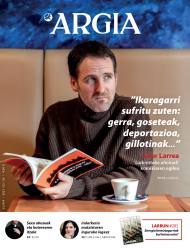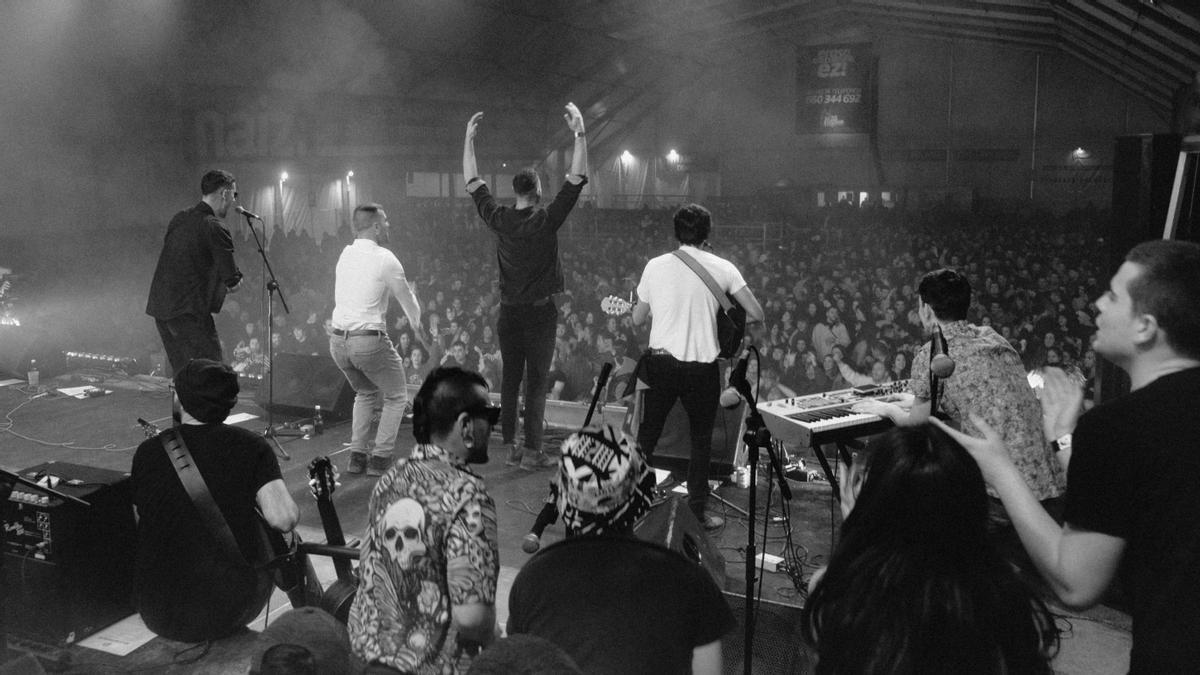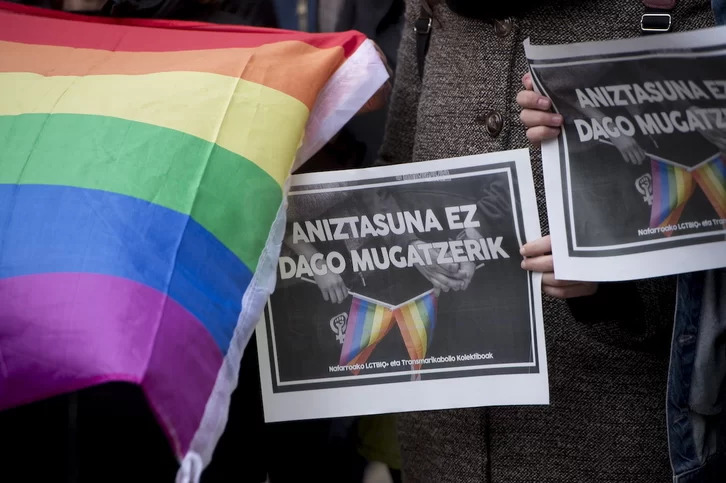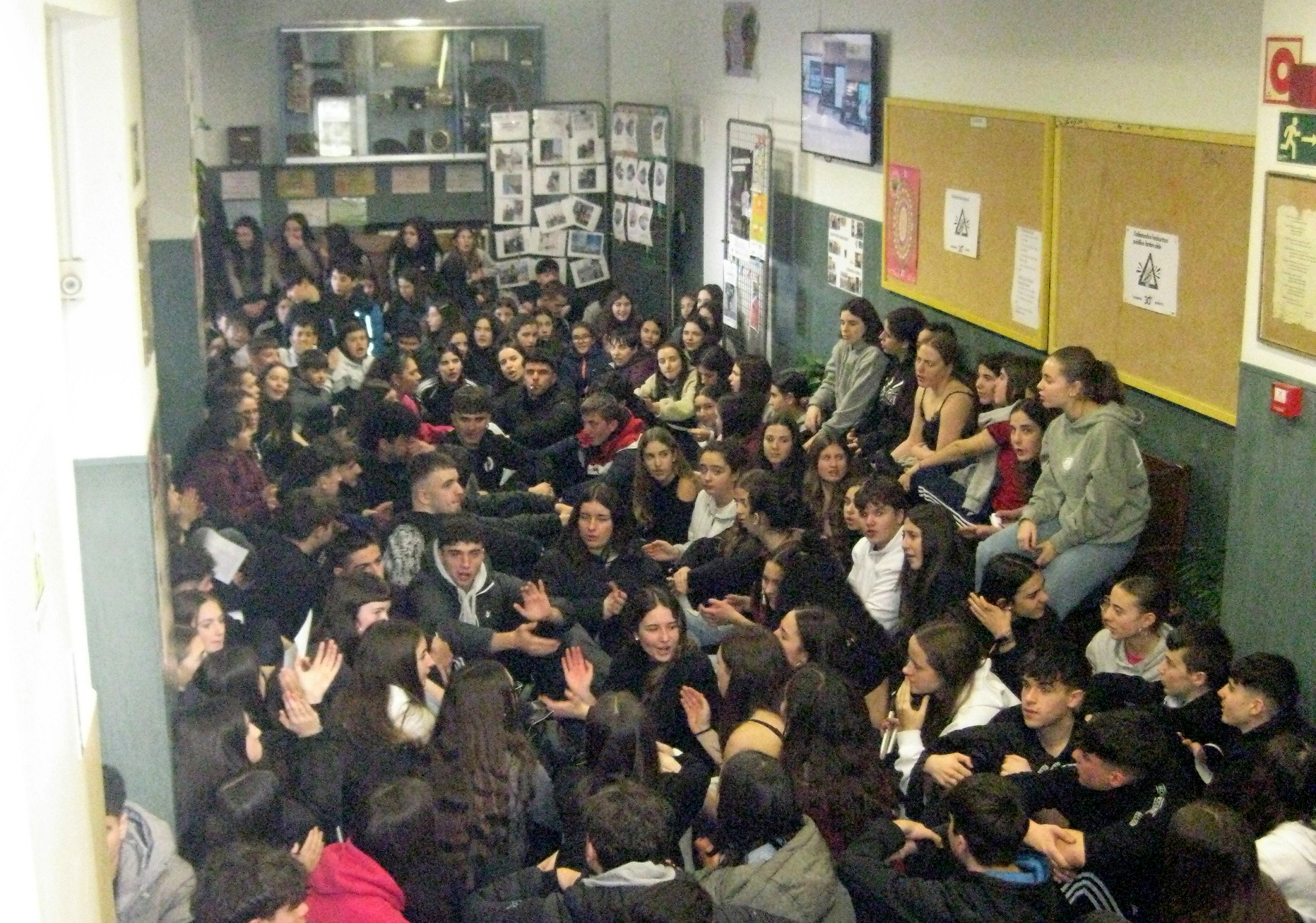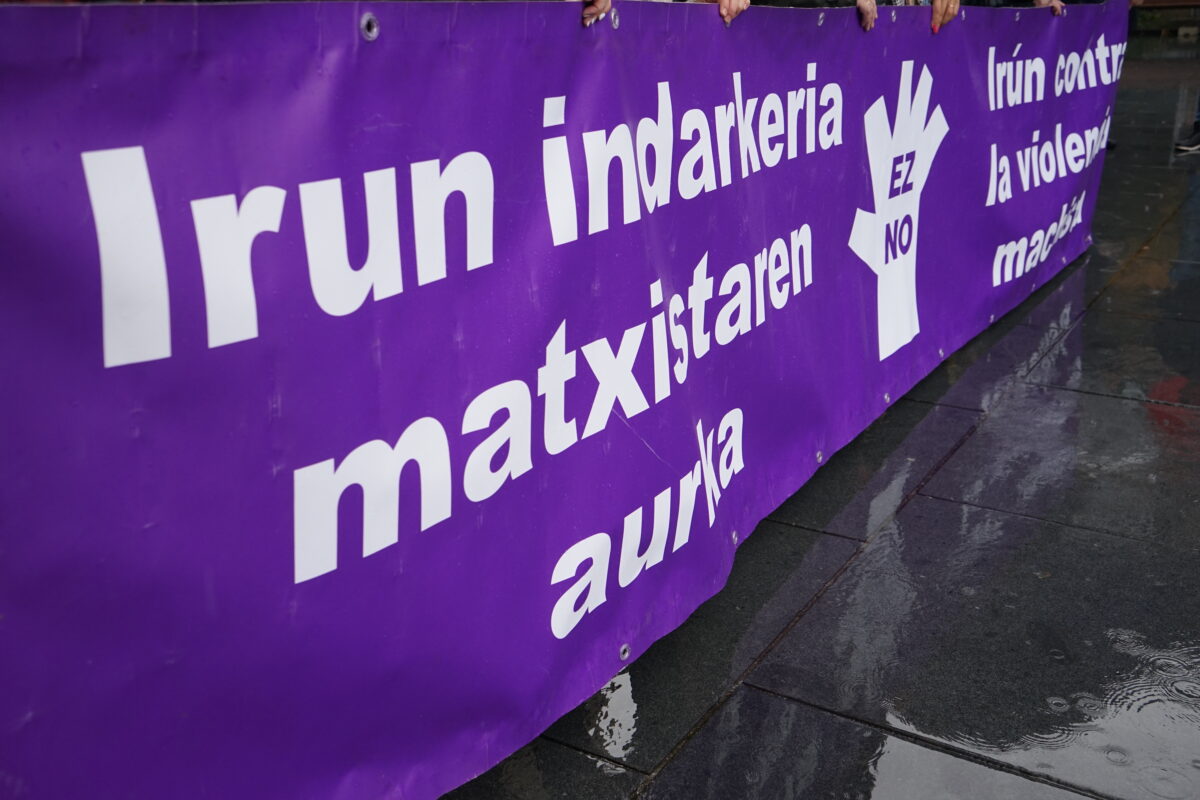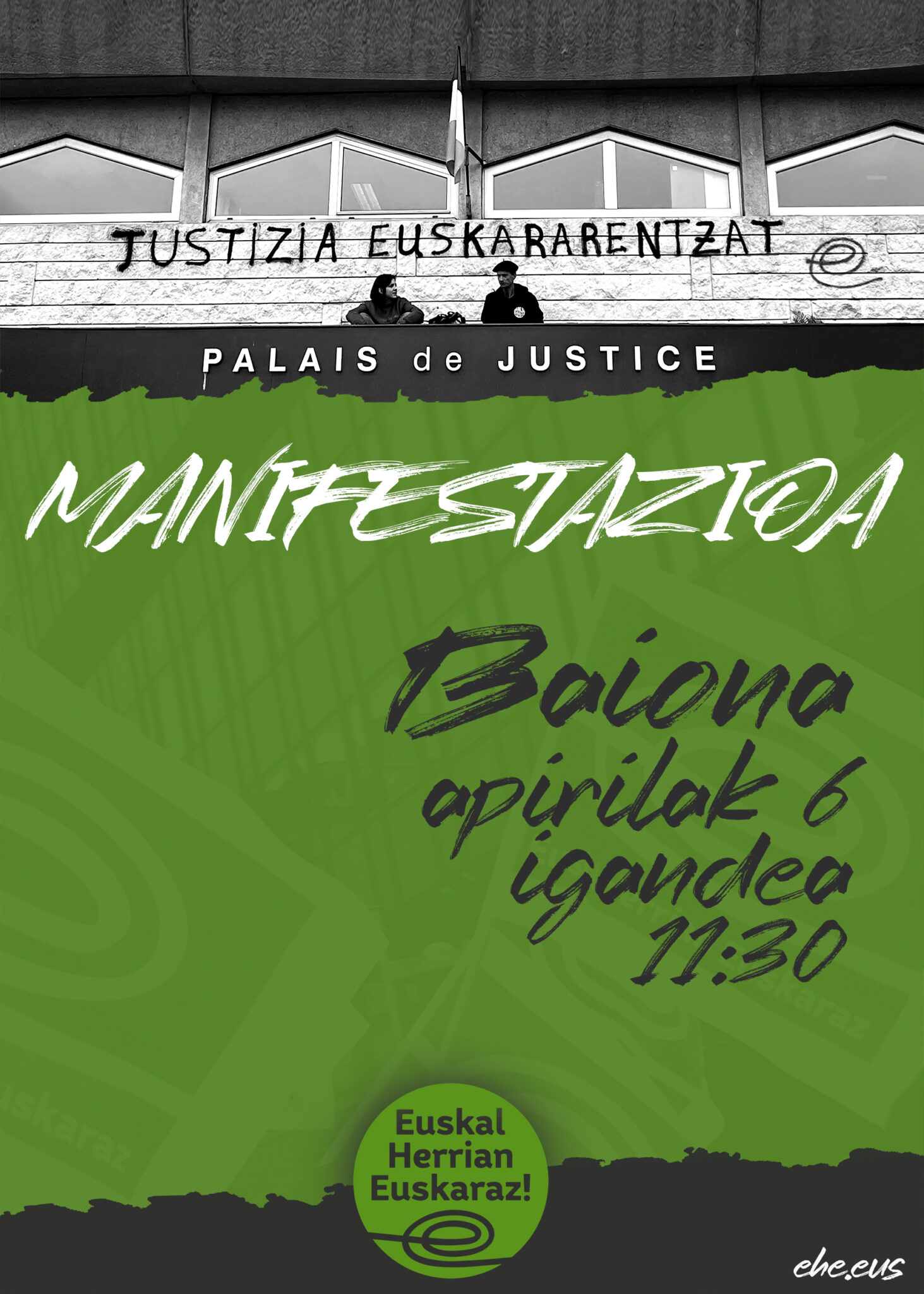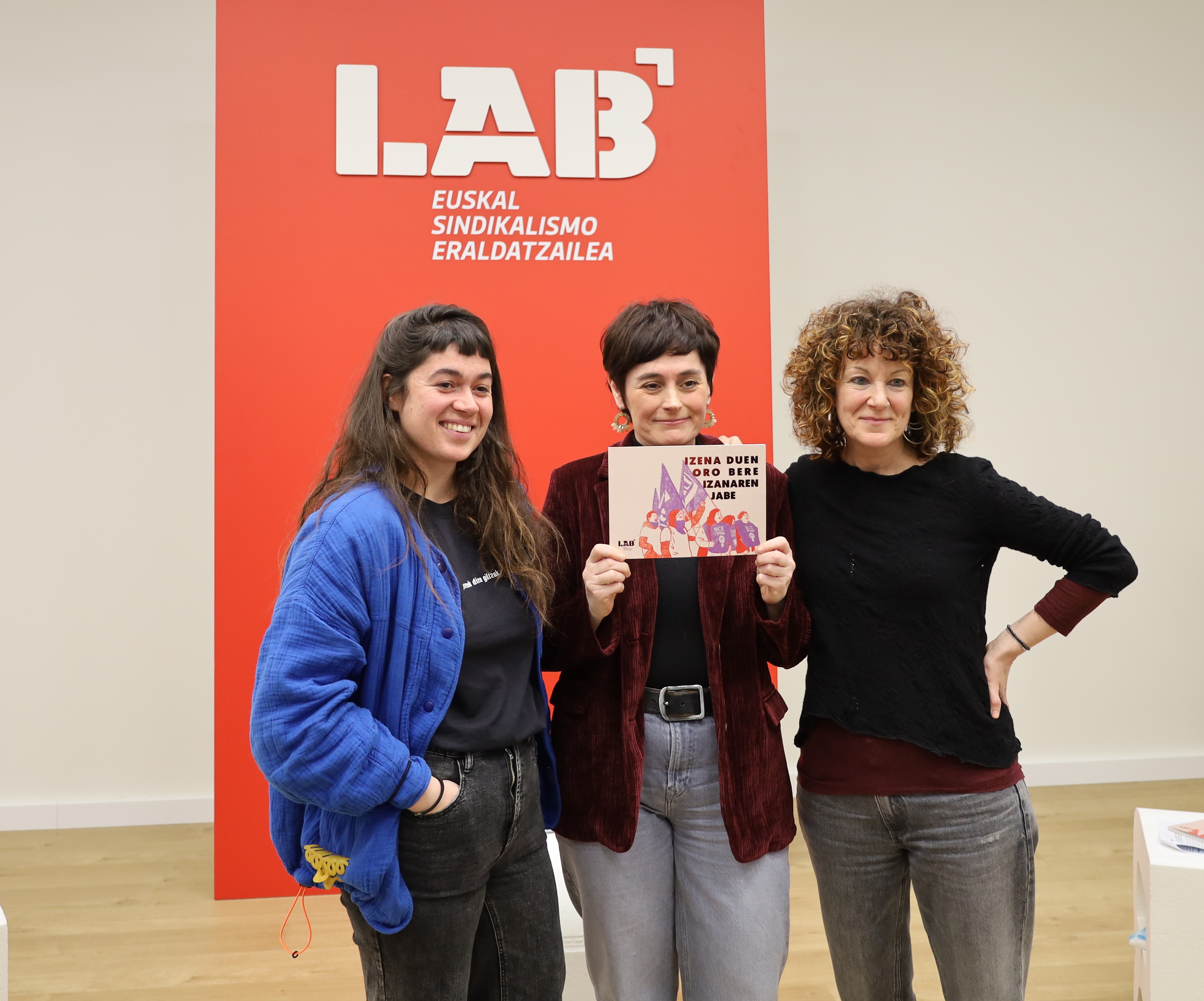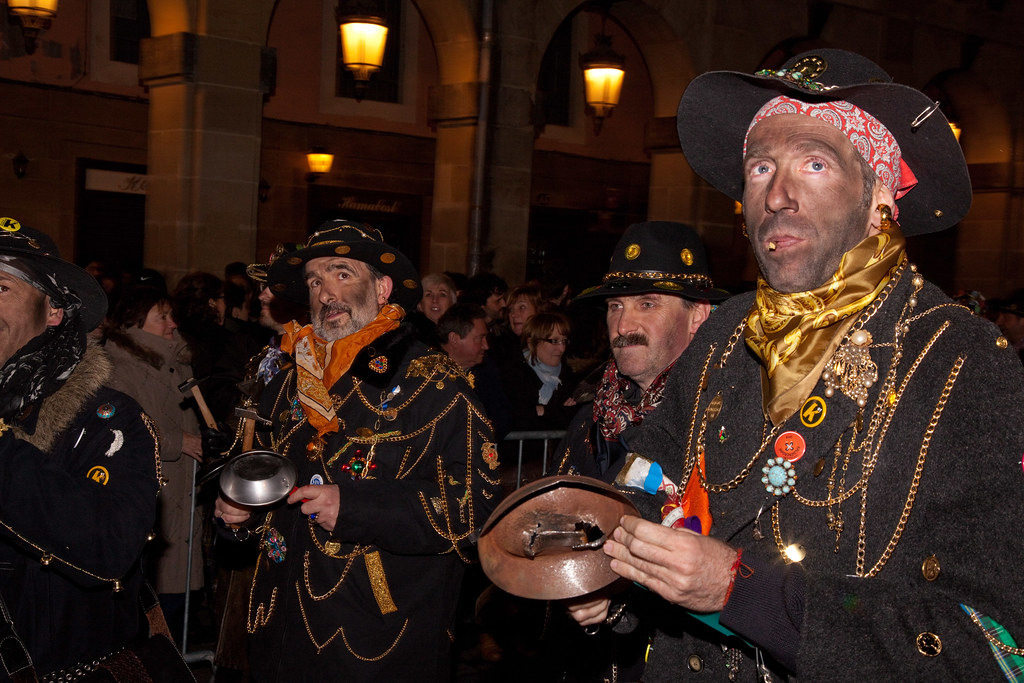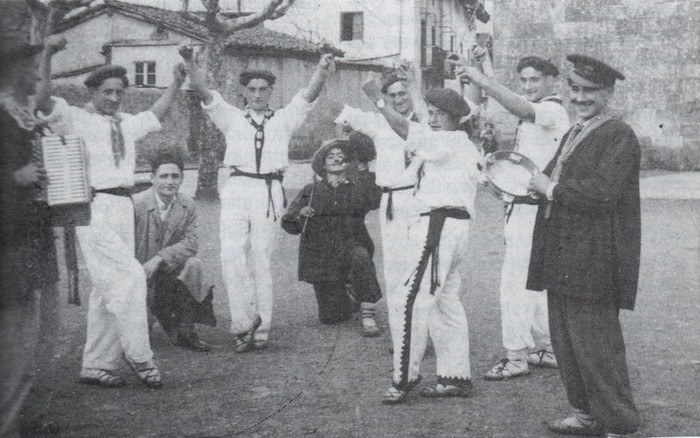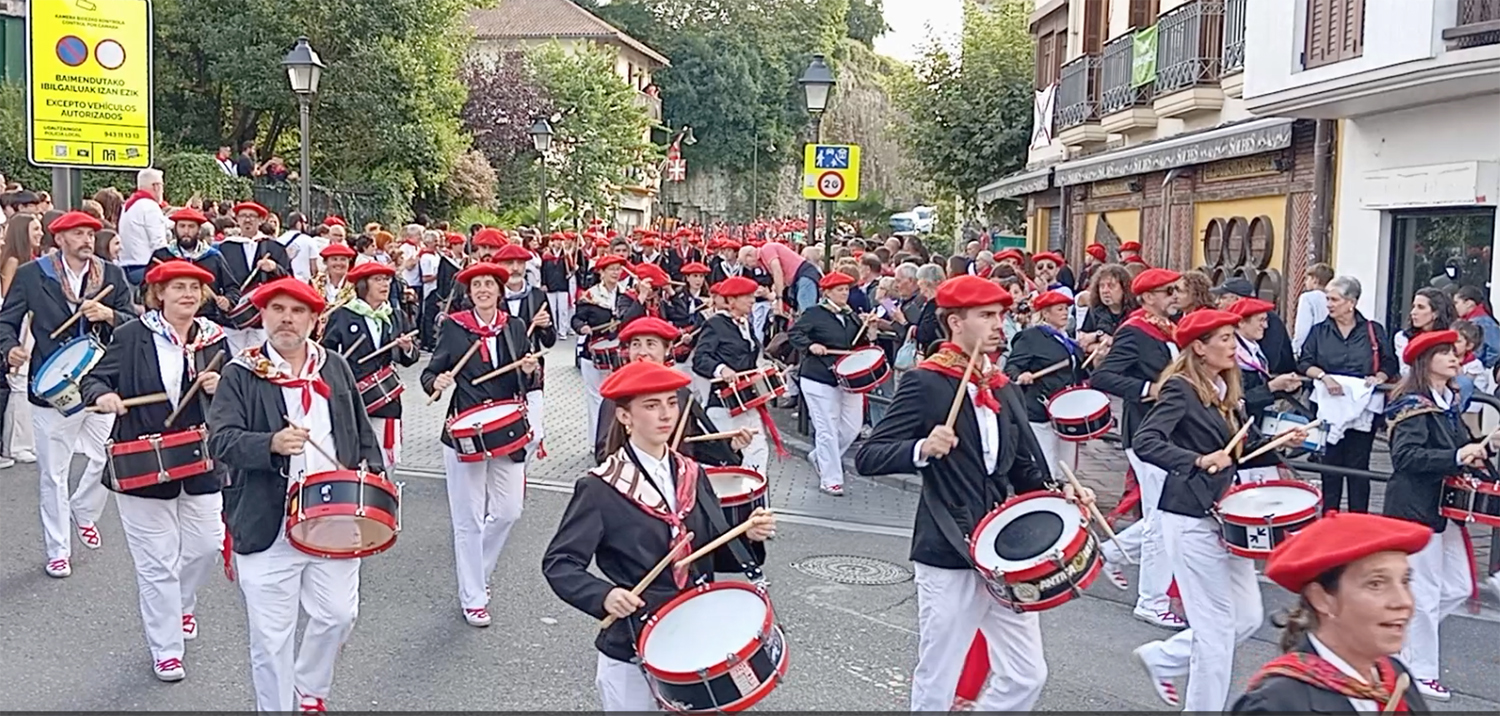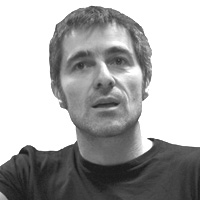The erasers and captives of power relations
- Cases of sexual abuse and pederastia within the Catholic Church have filled many pages of the media for the work done by the newspaper The Boston Globe two decades ago, since it received the Pulitzer Prize in 2003, to uncover the abuses of the Archbishop of Boston. But most media have focused on the drama experienced by the victims, not so much on the aggressors, let alone on the power and rules that have generated that impunity. Euskal Herria is no exception, there have also been silences, silences, drunks and captives here.
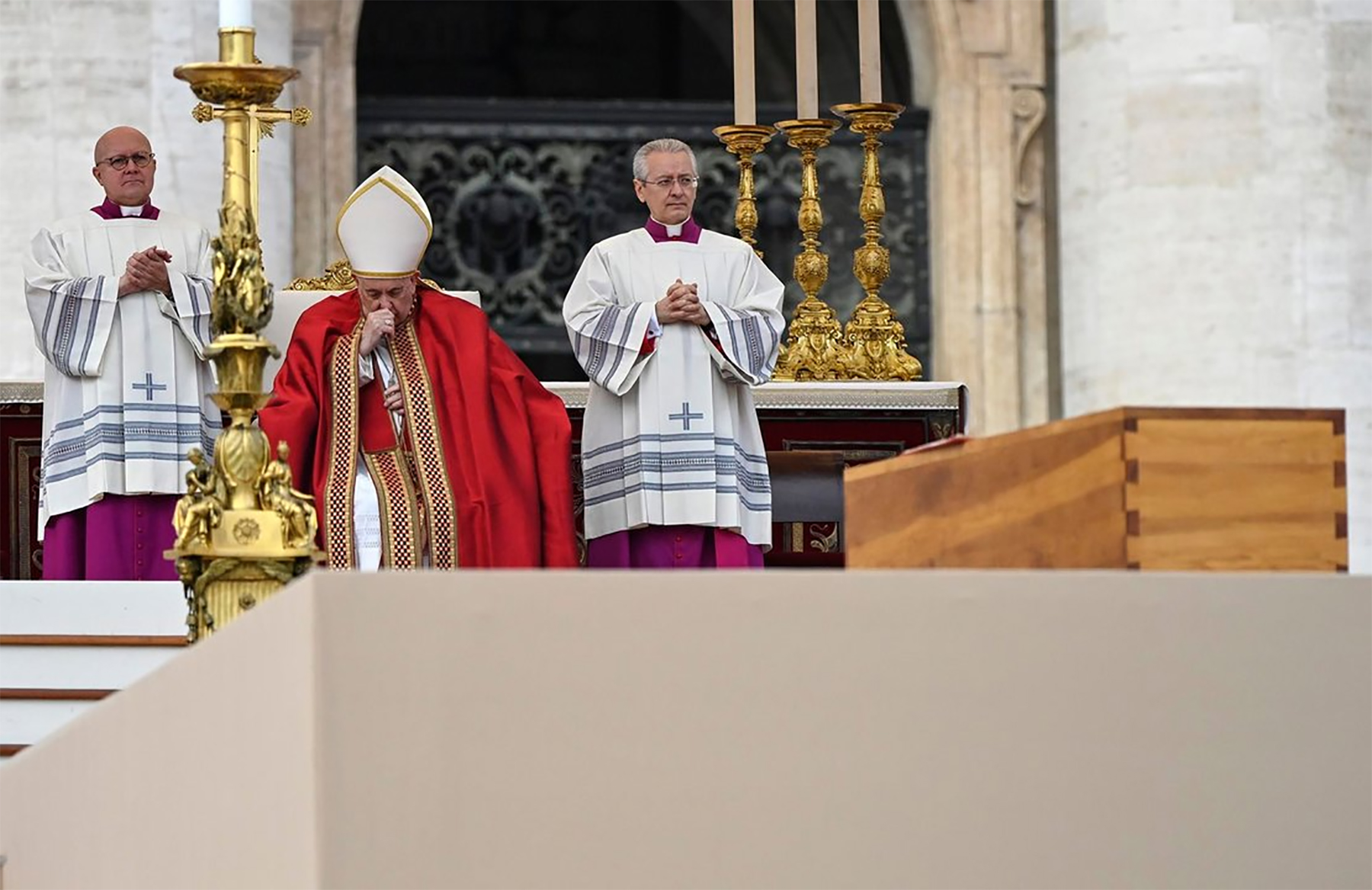
A whole culture of the Church must be questioned, because it has brought abuse, manipulation, aggression, lies and even death.” Veronique Margron, head of the Dominica Nun and the National Confederation of Religious of France (Corref), say so, if it is a sign of something. This body promoted the establishment of an independent commission of inquiry into sexual abuse within the French Church. Margron’s words respond to one of the great scandals of recent times: the case of Jean Vanier.
Theologian Jean Vanier was well known for his work worldwide with people with disabilities creating an organization called L’Arche. He received many decorations to recognize this work and was a candidate not infrequently for the Nobel Peace Prize. In 2020, a year after Vanier's death, the conservative Catholic newspaper La Croix released a surprising story: Vanier committed abuses against at least six women along with his Dominican spiritual father Thomas Phillipe, abuses that occurred in the Parisian religious community he was driving in the 1950s. It appears that some of the allegations of the time caused the ecclesiastical authorities to send Phillipe to South America temporarily. L’Arche Vanier followed this in 1964.
Immediately after the news, supporters of the theologian argued that Vanier was secular, that women were older, that there were no disabled people… So, what problem was there with these “erotic mystical relationships”? But Dominicos and L’Arche have just published a deeper investigation on 30 January. A report of hundreds of pages reports that the abuses lasted decades and that at least 30 women have denounced what happened. Control, authority, violence, fear -- words that are used. There is also a forced abortion. According to the authors of the report, the Church ' s warm attitude to the initial allegations was key to prolonging this situation over time.
.jpg)
Power relations, fear and impunity
The mechanisms of fear and historical impunity generated by power relations have allowed the Catholic Church to be the most important institution in the world where there have been massive sexual abuse, especially among children.
In the last major research published on pedocriminality, presented on February 13 by the Portuguese Episcopal Assembly, 4,815 cases have been identified in this country, which occurred since 1950. “The tip of the iceberg”. The victims were on average 11 years old when they were abused, of which 77 per cent have never counted anything, although many years have passed, almost all the prescribed cases. We do not have to ask too much why they have been silenced so far.
“For me it was what the priest gave orders, and that could not be questioned.” He told Berria journalist Jone Arruabarrena, one of the victims of the abuse of a cure called Don Andoni in Elgoibar. On Sundays, instead of teaching him Latin, the sotanito touched him at home, until he gathered the strength to say no: “Soon after, Don Andoni disappeared from Elgoibar.”
The case of Elgoibar is a good example: the representative of the Church uses the authority that gives him the political and social context to commit abuses, and when there is a complaint, the ecclesiastical authorities change place before the scandal arises. This was the case with the spiritual director of the Seminar of Derio, Manuel Estomba, as we explained at ARGIA in 2019, who was sent to the missionary to Ecuador after committing sexual abuse to several students.
Urdin Euskal Herri Irratia has filtered that there are already thirty complaints in the diocese of Baiona
Every time a case comes to light, the victim is publicly naked again. The poor knowledge of the aggressor often maintains his prestige – Estomba still has a park in Irun by his name – and even less we know of the complicity that has taken place in the hierarchy of the Church to cover these cases.
Boston to Bermeo, explosion of cases
On January 6, 2002, the newspaper The Boston Globe included on its cover a striking title: “The Church permitted priestly excesses for years.” The newspaper explained how the Boston archdiocese attempted to cover the sexual abuse committed by dozens of priests to children, paying millions of euros to purchase silence from local media, lawyers and institutions.
It wasn't the first time that pederasty had been published within the Church, but that research journalistic work of many months had moved the beams of the Catholic Church of the United States and revealed more cases. In 2003, the Boston journalists' team received the Pulitzer Prize. Years later, film director Thomas MacCarthy brought this story to the big screen, named Spotlight, winning the Oscar for the best movie.
.jpg)
For two decades, and especially in recent years, news and research on pederastia have increasingly narrowed the religious community running the Vatican. In 2018, the ECA Global organization put the number to this harsh reality to combat ecclesiastical abuses: about 100,000 people in the world have suffered sexual abuse within the Church.
But the figure may be much higher if we look at the data of the independent commission of the French State: in this country alone 330,000 children have been abused by three thousand representatives of the Church between 1950 and 2020. Some of the abuses, thirteen priests, belong to the diocese of Bayonne, Oloroe and Lescar, which abused 21 minors. But this fact is on the increase: as Urdin Euskal Herri Irratia has filtered, there are already thirty complaints filed in that diocese, which will compensate the victims with 250,000 euros.
In the Spanish State, for its part, the newspaper El País decided to start an investigation on its own – in the absence of an official initiative – and has published a database with almost two thousand cases of sexual abuse linked to the Church. In Hego Euskal Herria, 96 people are accused of child abuse.
In our environment, things have also moved and some cases have been reported. For example, the abbot Juan Kruz Mendizabal Kakux recognized several young people from a free time group – the Bishopric of San Sebastian only imposed a slight penalty of three years on the then Deputy General of Gipuzkoa – to the pupils of the schools of Erandio, Bilbao, Pamplona and Artziniega of Bermeo, to whom the Public Ministry had left the cases.
The Public University of Navarra, in collaboration with the Association of Victims of Abuse of Navarra, published last year a report on the abuses in the ecclesiastical institutions of the Foral Community. Between 1948 and 1985, 60 testimonies of sexual abuse have been collected and 31 abuses have been identified. With these data, the Parliament of Navarra approved in July 2022 the Law on the Recognition of Victims of Sexual Abuse within the Church, in order to “bring them to the collective memory”, launching a commission of inquiry.
The Commission of Abuse Investigation will start interviews with victims in Navarra
Since last October the commission for the recognition of victims of sexual abuse by representatives of the Church has been launched in Navarra. They explained that interviews with those affected would begin in February, as they had already received the first requests for recognition. It has historians, criminologists, psychologists, teachers and human rights experts. Izaskun Gartzaron, spokesperson and head of the Criminal Victims Assistance Negotiation of the Government of Navarra, has pointed out that the goal is to “help” those who need it.
Abuse, everybody's responsibility?
The Commission is established within the framework of the law on the recognition of sexual abuse. The law was passed in the Parliament of Navarre in July 2022, with the support of all parties except Navarra Sumaria. This part, to deny, compared victims of abuse suffered by the Inuit within the Church of Navarra. The bishopric of Pamplona also criticizes the generalization of responsibilities and says that “all victims” of abuses are not taken into account.
In particular, the Minister of Justice of Navarra, Eduardo Santos, said that the representatives of the Church of Navarra should be in committee, but at the moment the Church has refused.”
“You can’t talk”
“The child only knows how the pain can lead. He has all his life ahead, there is no past and he is able to overcome almost everything, but that experience, that of taking a penis to an old man, cannot be put into words.” José Ramón Blázquez told Alberto Barandiaran, Iñigo Astiz and Miren Rubio who lived as a child. Cases of pederastia in the church of the Basque Country (Elkar, 2017).
With the help of the director of the Casa de Misericordia in Bilbao, José Luis Perdigo, the book gathers the barbarities and sexual abuse suffered by Blazquez and his classmates, as well as those that have occurred in eleven other places: Ondarroa, Gabiria, Ibarra… They have conducted more than 50 interviews to the book, and, as they explain, in the testimonies collected, pain from attacks is a broad sign.
They say that this reality cannot be put into words, and that is why fiction is often used. Maddi Ane Txoperena in her novel Ez erran inor (Elkar, 2022) brutally reflects the secret feeling of a person who has suffered childhood abuse, in this case at home: tok, tok… “the beast’s response is a constant rumor.” The pain can be deeper if the response is that way.
Every time a case comes to light, the victim is again publicly naked
According to Barandiarán, Astiz and Rubio, abuses are still only "corrupt apples" for the Church, and "rejects the study of the power structures that have allowed so many sexual abuses for so many years." We must look at these structures so that not only is there recognition and recognition of what is being done, but it does not happen again. For former seminary and journalist Juan Mari Arrangi the key is prevention: “Repression within the Church, also in relation to sex, was and continues to exist”, explains this weekly, and believes that a “comprehensive” education on sexuality is still lacking. He knows what he's talking about. Arrangi made public the sexual abuse suffered by Manuel Estomba when they entered the Derio seminary when he was only a child.
Concordance and complicity
After the War of 1936, the threads between the Catholic Church and the Franco regime were perfectly united. Moreover, in 1953 Franco signed the agreement with the Vatican and, in exchange for international recognition, the dictator fully empowered the Church to catholize all education, as well as to influence economically, when in the 1960s the technocratic ministers of Opus Dei entered the government. Money and power.
From this authoritarian environment there are many reported cases of pederastia, provoked by impunity and the serenity of knowing that no one was going to hold them to account. Juan Mari Arrangi is clear that the ecclesiastical hierarchy was complicit in these systematic sexual abuses: “He blocked them and did not take immediate action. Instead of expelling the abuses of seminaries and religious houses, it changed them at the most, and so they were able to continue abusing,” he says.
In that hierarchy, how far could complicity go? In Euskal Herria there is still no magnifying glass, but in other places they have gone far. In Germany, on behalf of the Archdiocese of Munich, an investigation has been conducted into the implication of sexual abuse in the state of Bavaria since the end of World War II until at least 1982, and they have been able to demonstrate that Pope Joseph Ratzinger Benedict XVI, when he was Archbishop of Bavaria, knew four cases, but did nothing. What is worse, trying to curb the abuses of a parish priest, ordered his transfer, which was then pontifical for all Catholics. That is why a trial will be held in Munich on 28 March, but the problem is that Ratzinger has already died.
.jpg)
Power still
But it cannot be said that the conduct of covering, bleaching, disparaging or generalizing sexual abuse within the Church is something of the past. Today it is also very present. Why did the Bishop of Pamplona say that the Navarre law on recognition of victims of sexual abuse of the Church discriminates against “other victims”? Why did Kakux participate in the presentation ceremony of the new bishop of San Sebastian without repentance? Why did Ratzinger say that paedophilia is a “all” problem?
Money and power. Power and impunity. Here are many binomials at stake. For example, in the production of this report we have been able to see how far the Church's media arms can reach in Google's rapid searches, how far public opinion can influence pederasty. Impunity and the media.
The weight of Sotane men in today’s finances and the world economy can also put us at risk. The Vatican State does not have Gross Domestic Product, it operates as a company and is the largest real estate owner in the world, in Italy alone, 20% of the land is its own. For its part, the Vatican Bank maintains funds of EUR 7 billion. Last year, however, profits were halved, of which a significant proportion had to go to compensation for sexual abuse. It is precisely Pope Francis who has ordered to transfer to his bank all the money that the institutions of the Church earn. Italian journalist Gianluigi Nuzzi and author of the book Vaticano, S.A. (Chiarelettere, 2009) states that the Holy Bankruptcy could arrive in 2023...
In view of all this, it may be better understood why the Catholic Church does not want real structural change in the face of sexual abuse: it does not want to lose power.
'Shame': portraits of abuses
.jpg)
The Diocesan Church Museum in Bilbao hosts an exhibition entitled Shame, with testimonies of one hundred people from all over Europe who were sexually abused as children, accompanied by portraits of each of them by the Italian photographer Simone Padovani. The exhibition has been promoted by the Justice Initiative, a European initiative to denounce child abuse and will later be presented in Barcelona and other European cities. During the exhibition in Bilbao, which will remain open until 25 March, several conferences and meetings will be held on the subject.
In the Diocesan Museum there are cases of children who have suffered sexual abuse in different areas, such as those that occurred at home or in sports groups, and even abuses have been involved in institutions within the Church. But the exhibition does not include names or photographs of the aggressors, only of the victims. Includes testimony of Juan Cuatrecasas.
Cuatrecasas tells of the hand of professor José María Martínez Sanz of the Gaztelueta school of Opus Dei in Bilbao between 2008 and 2010: “At 12 years old I was not fully aware of what was happening, but I knew it was not normal and I did not like it. There is something more painful than abuse: covering up what happened and victimizing the victim again.” In the case of castles, Martínez was sentenced by the Provincial Court of Bizkaia to two years in prison, but the school of Opus Dei has never accepted what happened, has always removed credibility from the testimony of the student. Now, Pope Francis vows by letter to his family that Church justice will also investigate the case.
I don't want my daughter disguising herself as a Gypsy in the caldereros. I don’t want Gypsy children at my daughter’s school to dress up as Gypsies in caldereros. Because being a gypsy is not a disguise. Because being a gypsy is not a party that takes place once a year, with... [+]
The Department of Education doesn't understand why public employees have gone on strike. He's got to ask the LAB Syndicate. This union signed an agreement with the department in April 2023. Two years later they have also called for a strike because, unlike the previous ones, the... [+]
Erretiratu berri den lankide-ohi baten omenez, Historiako irakaslea. Bejondeizula!
Hezkuntza-legeek azpimarratzen dute zein garrantzitsua den ikasleengan pentsamendu kritikoa sustatzea. Baina irakasle-klaustroak, garai batean ideien eztabaidarako eta proposamenak... [+]









